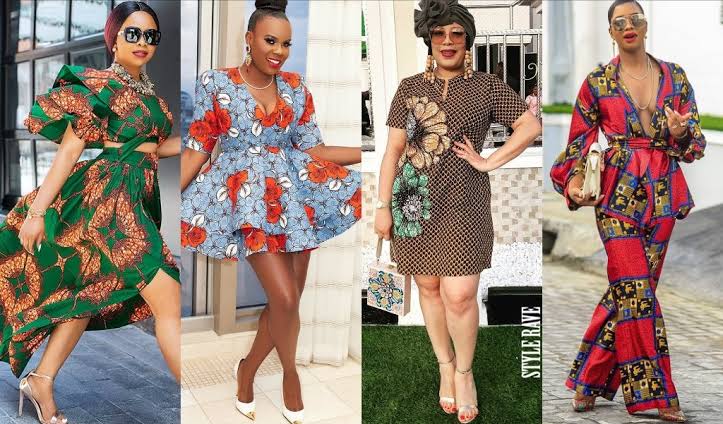
African prints — commonly known as Ankara, Kente, or Dashiki — have become a defining voice in global street style. From Brooklyn block parties to London’s Shoreditch, these fabrics are bridging culture and contemporary fashion. This article explores why African prints are trending in New York and London, the designers and celebrities pushing the movement, how to style prints for city streets, and what the trend means for the future of fashion.
The global rise of African prints
African prints are no longer confined to cultural festivals or regional markets — they have entered mainstream wardrobes. Bold geometric patterns, vibrant color palettes, and meaningful motifs have captured the attention of fashion editors, influencers, and everyday street stylers across the U.S., UK, and Canada. The result is a visible and influential presence on the streets of two of the world’s most photographed cities: New York and London.
From Lagos and Accra to London: a cultural exchange

London’s fashion landscape, historically experimental and multicultural, has embraced African fabrics in retail, runway, and grassroots street style. Neighborhoods like Brixton and Shoreditch showcase small boutiques and market stalls selling contemporary pieces made from traditional wax prints. Young creatives mix heritage motifs with modern tailoring — think Kente-blend blazers paired with relaxed denim or an Ankara midi skirt styled with a minimalist knit.
New York’s melting pot: African prints meet streetwear

In New York, African prints offer a fresh language for self-expression. Brooklyn and Harlem have become visible frontiers for designers and stylists experimenting with African textiles. The prints are reinterpreted in bomber jackets, tailored suits, sneakers, and statement accessories. Cities with strong diasporic communities naturally become trend incubators — and New York’s creative ecosystem turns those incubations into international trends.
Celebrity influence and social media acceleration

High-profile celebrities and influencers have accelerated adoption. When artists and actors wear African print ensembles on red carpets, music videos, or fashion shoots, the looks are instantly shared across Instagram, TikTok, and Pinterest. That visibility converts runway curiosity into street-level demand: people see, copy, and remix.
- Celebrity endorsements make prints aspirational.
- Influencers provide styling ideas for day-to-night looks.
- Hashtags and reels amplify trends internationally.
Designers and labels to watch
Several designers are leading the way by blending traditional craftsmanship with contemporary silhouettes. These labels and creatives are bringing African prints to fashion weeks and boutique storefronts, proving the fabrics’ versatility.
- Duro Olowu — known for eclectic prints and intelligent tailoring.
- Maki Oh — blends Nigerian heritage with modern womenswear.
- Orange Culture — gender-fluid menswear using wax prints.
- Local emerging designers in London and New York who are collaborating with tailors and textile artists to create limited-run streetwear pieces.
Why African prints are trending in 2025
The momentum behind African prints stems from a mix of cultural, economic, and stylistic factors:
- Cultural Reclamation: Diaspora communities reclaim heritage as style and identity.
- Sustainability and Craft: More brands emphasize ethical production and artisanal techniques.
- Diversity in Fashion: Global brands seeking authenticity adopt and spotlight non-Western design languages.
- Social Media: Viral styling videos and street-style photography spread trends fast.
How to style African prints for the city
Want to wear African prints confidently on the streets of New York or London? Try these approachable styling tips:
1. Start with accessories
Add prints with headwraps, bags, or shoes to ease into the aesthetic while keeping your outfit grounded.
2. Balance busy prints with neutral basics
Pair a patterned skirt with a plain tee or blazer for a polished, modern look.
3. Modern tailoring
Wearing a tailored Ankara blazer or Kente suit is a powerful way to combine traditional prints with contemporary silhouettes.
4. Festival and statement looks
For events or nightlife, go full print with a coordinated set — confident and camera-ready.
Where to shop (quick guide)
Look for local boutiques and online stores that prioritize ethical manufacturing and support African artisans. Pop-up markets and vintage stores in major neighborhoods often carry unique pieces you won’t find in mainstream stores.
Impact on the fashion industry
The mainstreaming of African prints is changing retail assortments, editorial coverage, and runway programming. More fashion editors, buyers, and museum curators are recognizing African textiles as important cultural artifacts and modern design instruments — a shift that creates opportunities for designers and craft communities across Africa.
Looking forward: what’s next?
African prints will continue to evolve. Expect more collaborations between African ateliers and Western brands, greater use of sustainable fabrics, and more gender-fluid interpretations. The trend’s staying power will depend on ethical sourcing, support for artisan communities, and genuine creative exchange rather than extractive appropriation.

Leave a Reply